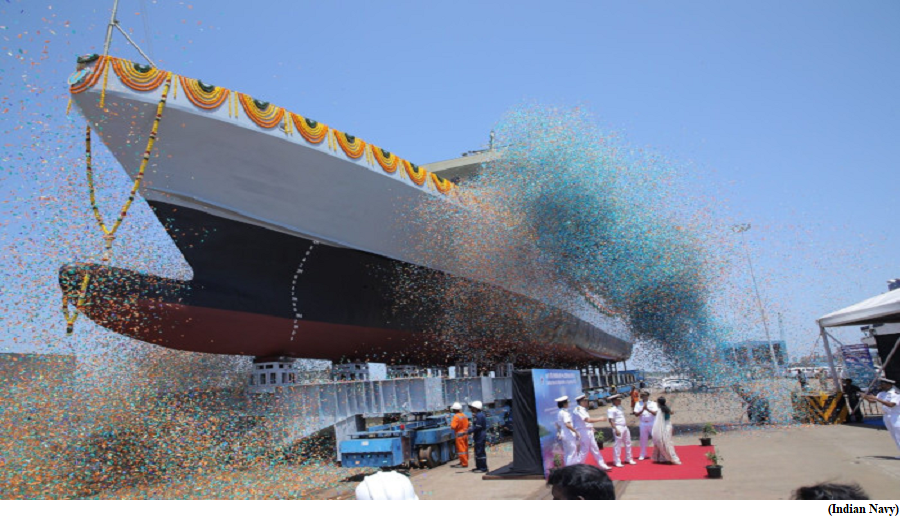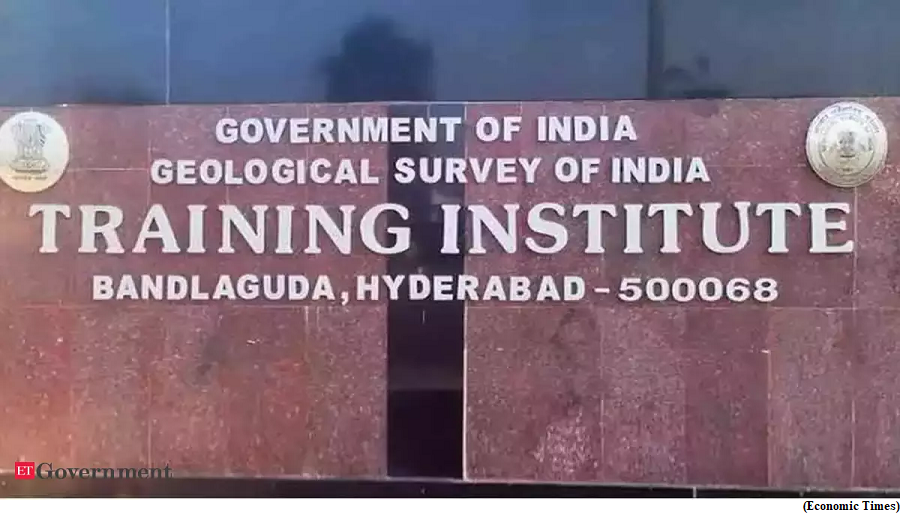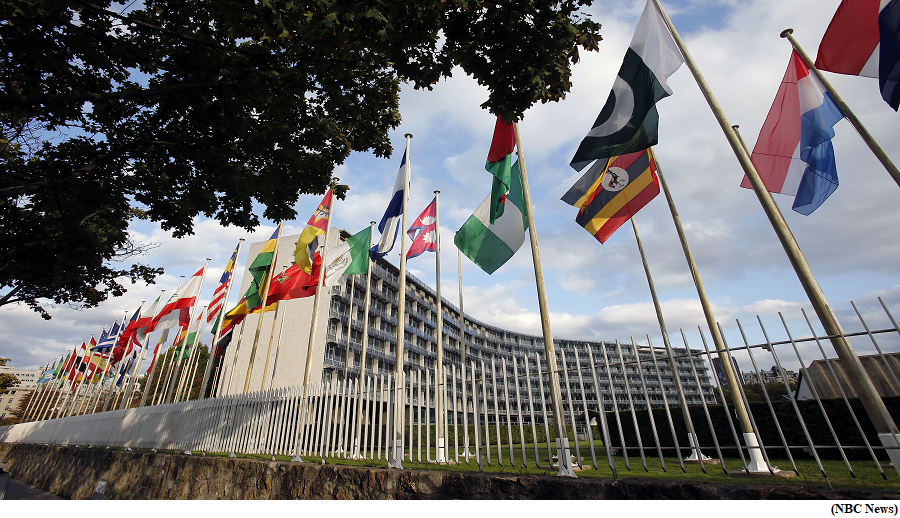Launch of ‘Anjadip’ Third Ship of ASW SWC (GRSE) (GS Paper 3, Defence)

Why in news?
- Recently, ‘Anjadip’, the 3rd of eight ships of ASW Shallow Water Craft (SWC) Project being built by M/s GRSE for Indian Navy, was launched at M/s L&T, Kattupalli.
- The keel for the 7th ASW SWC ship was also laid.
Why named as Anjadip?
- The ship has been named Anjadip to signify the strategic maritime importance accorded to the island of Anjadip, located off Karwar.
- The island is connected to the mainland by a breakwater and is part of INS Kadamba.
ASW SWC ships:
- Arnala class of ships will replace the in-service Abhay class ASW Corvettes of Indian Navy and are designed to undertake anti-submarine operations in coastal waters, Low Intensity Maritime Operations (LIMO), and Mine Laying operations including subsurface surveillance in littoral waters
- The 77 m long ASW SWC ships have a displacement of 900 tons with a maximum speed of 25 knots and endurance of 1800 NM.
- The ASW SWC ships will have over 80% indigenous content, thereby ensuring that large scale defence production is executed by Indian manufacturing units, generating employment and capability enhancement within the country.
Background:
- The contract for building eight ASW SWC ships was signed between MoD and Garden Reach Shipbuilders & Engineers (GRSE), Kolkata on 29 Apr 2019.
- As per the build strategy, four ships are being built at GRSE, Kolkata and construction of balance four ships has been sub-contracted to M/s L&T Shipbuilding, Kattupalli.
Way Forward:
- The first ship of the project is planned to be delivered to Indian Navy by Dec 23.
Geological Survey of India Training Institute (GSITI), Hyderabad gets Accredited as “Athi Uttam”
(GS Paper 3, Economy)
Why in news?
- The Geological Survey of India Training Institute (GSITI) functioning under the Ministry of Mines, has been awarded with the accreditation by the National Accreditation Board of Education and Training (NABET) in recognition of the yeomen services it has rendered and high standards maintained in the field of earth science training.
- The team from Capacity Building Commission (CBC), NABET and Quality Control of India conducted the on-site assessment and awarded the Certificate of Accreditation with the grading of Athi Uttam.

About GSITI:
- Established in 1976, GSITI with its headquarters at Hyderabad, has six Regional Training Divisions (RTD) located at Hyderabad, Nagpur, Jaipur, Lucknow, Kolkata and Shillong.
- Four Field Training Centers (FTCs) are also established at Chitradurga (Karnataka), Raipur (Chhattisgarh), Zawar (Rajasthan) and Kuju (Jharkhand).
Role:
- These Centers are established as per the vision of the Ministry of Mines to impart various trainings to geoscience professionals, teachers, researchers and students in various subjects of geology.
- Thus, GSITI is a national training facility, under the Ministry of Mines that provides training and capacity building to multiple stakeholders including Central and State Departments, PSUs (MECL, ONGC, OIL, NMDC), national academic institutions (IITs, Central Universities and Colleges) and colleges.
- The institute regularly conducts courses on remote sensing under NNRMS Programme sponsored by the Indian Space Research Organization (ISRO).
- It is an institute of international repute and offers training to participants of developing nations under ITEC programme sponsored by the Ministry of External Affairs. Professionals from 75 nations have already trained by the institute.
Launch of ‘Sanshodhak’, Fourth Ship of Survey Vessel (Large) Project
(GS Paper 3, Defence)
Why in news?
- Recently, ‘Sanshodhak’, the fourth of four ships of Survey Vessels (Large) (SVL) Project, being built by L&T/ GRSE for Indian Navy was launched at Kattupalli, Chennai.
- The ship named ‘Sanshodhak’, meaning ‘Researcher’, signifies the primary role of the ship as a Survey Vessel.

Background:
- The contract for building four SVL ships was signed between MoD and Garden Reach Shipbuilders & Engineers (GRSE), Kolkata in Oct 2018.
- As per the build strategy, the first ship would be built at GRSE, Kolkata and construction of the remaining three ships upto outfitting stage, has been sub-contracted to M/s L&T Shipbuilding, Kattupalli.
- The first three ships of the project, Sandhayak, Nirdeshak and Ikshak were launched on 05 Dec 21, 26 May 22 and 26 Nov 22 respectively.
Salient feature of SVL ships:
- SVL ships will replace the existing Sandhayak Class survey ships, with new generation hydrographic equipment, to collect oceanographic data.
- The Survey Vessel (Large) ships are 110 m long, 16 m wide with a displacement of 3,400 tons. The hull of these ships is made from indigenously developed DMR 249-A steel manufactured by Steel Authority of India Limited.
- With a capability to carry four Survey Motor Boats and an integral helicopter, the primary role of the ships would be to undertake full scale coastal and deep-water hydrographic surveys of Ports and navigational channels.
- The ships would also be deployed for collecting oceanographic and geophysical data for defence as well as civil applications. In their secondary role, the ships are capable of providing limited defence, HADR, and can serve as Hospital ship during emergencies.
Indigenous:
- The Survey Vessels Large will have over 80% indigenous content by cost, ensuring defence production by Indian manufacturing units with a spin off in employment generation and warship building capability in the country.
- Launch of the fourth Survey Vessel reinforces resolve in indigenous shipbuilding, as part of the Government’s vision of ‘Make in India’ and ‘Aatma Nirbhar Bharat’.
US wants to rejoin UNESCO after years of disputes over Israel and Palestine
(GS Paper 2, International Relation)
Why in news?
- The United Nations Educational, Scientific and Cultural Organisation (UNESCO) announced recently that the United States will rejoin it in July, four years after it left the agency (along with Israel), alleging that UNESCO was biased against Israel.
- The move to rejoin will face a vote by UNESCO’s member states and is expected to pass easily.

About UNESCO:
- UNESCO is a UN agency tasked with furthering international cooperation and peace through the promotion of educational, scientific and cultural causes.
- For instance, it designates locations globally as World Heritage Sites, which means international recognition and possible funding. The United States was a founding member of UNESCO in 1945.
What made the US leave UNESCO?
- The issue goes back to 2011, when UNESCO inducted Palestine as a member. This led to the US halting the agency’s funding, worth millions of dollars, under then President Barack Obama.
- Palestine is not recognised as a sovereign state by the United Nations. It was included as a non-member observer State over Israel’s objections in 2012, meaning it could participate in General Assembly proceedings but lacked voting rights.
- The Palestinians claim the West Bank, east Jerusalem and Gaza Strip territories captured by Israel in the 1967 war for an independent state. Israel says the Palestinians’ efforts to win recognition at the UN are aimed at circumventing a negotiated settlement and meant to pressure Israel into concessions.
- Israel and the United States termed the inclusion of Palestine, UNESCO’s previous criticism of Israel’s occupation of East Jerusalem and naming what it said were ancient Jewish sites as Palestinian heritage sites as examples of anti–Israel bias.
- US laws, owing to the country’s historical ties with Israel, prohibit funding to any UN agency that implies recognition of the Palestinians’ demands for their own state. But this was negotiated recently through an agreement in 2022 that allowed for giving UNESCO funds again.
The US’s earlier withdrawal from the UN:
- The United States previously pulled out of UNESCO under the Ronald Reagan administration in 1984 because it viewed the agency as mismanaged, corrupt and used to advance Soviet interests.
- It rejoined in 2003 under then President George Bush.
Why has the US moved to join UNESCO again?
- The decision to return was also due to China filling the gap left by the US in UNESCO policy making, such as in setting standards for artificial intelligence and technology education around the world.





